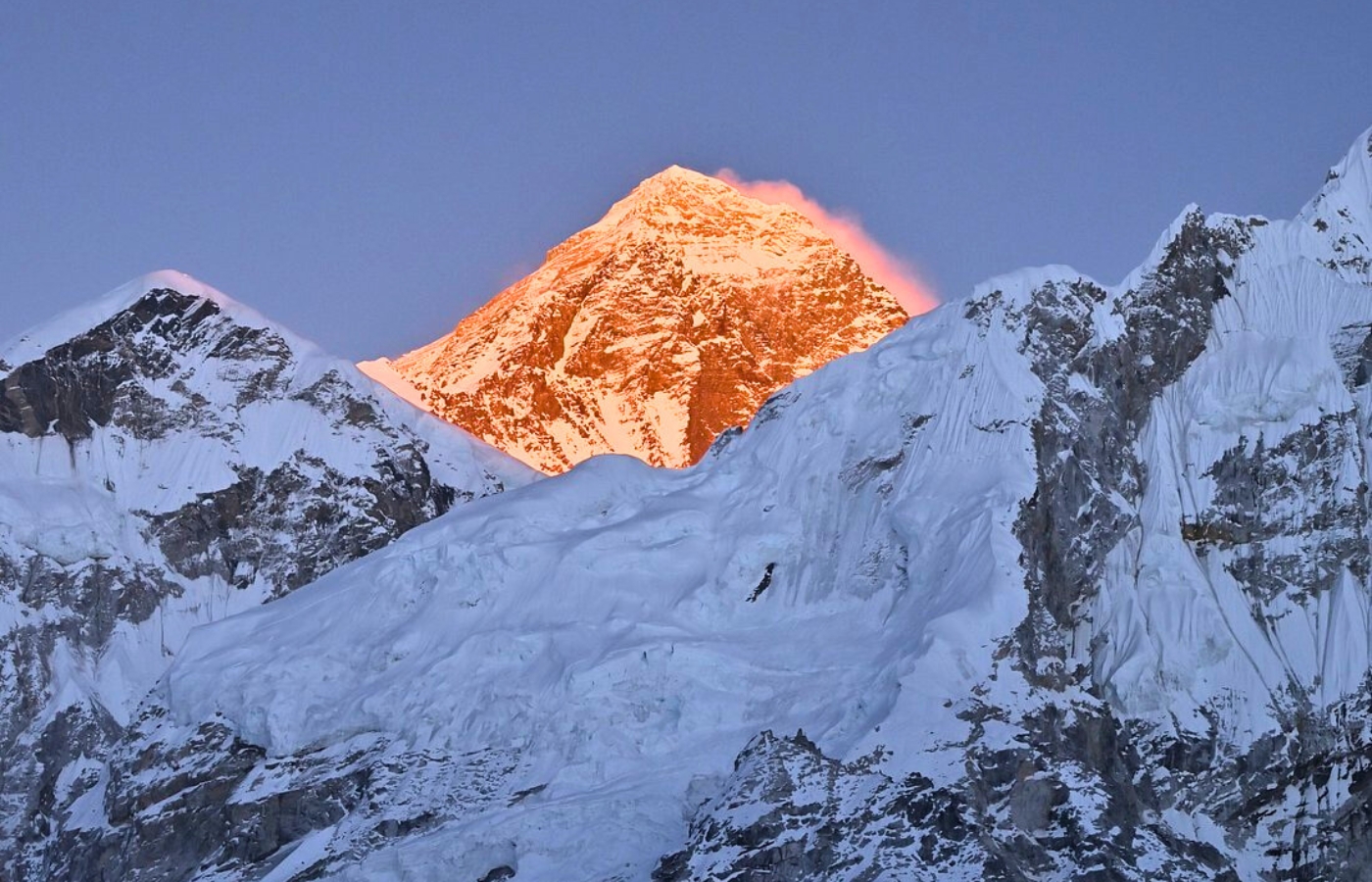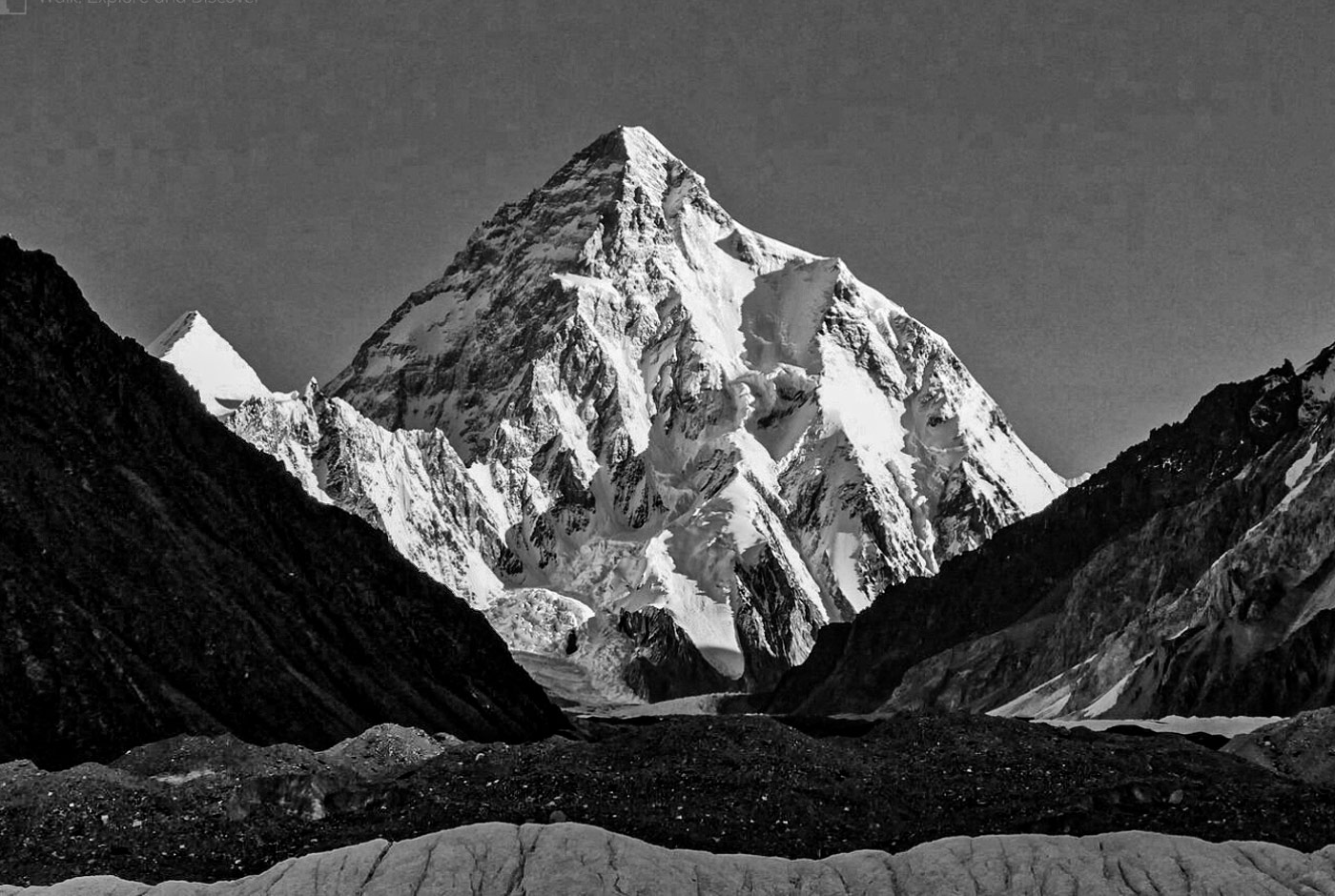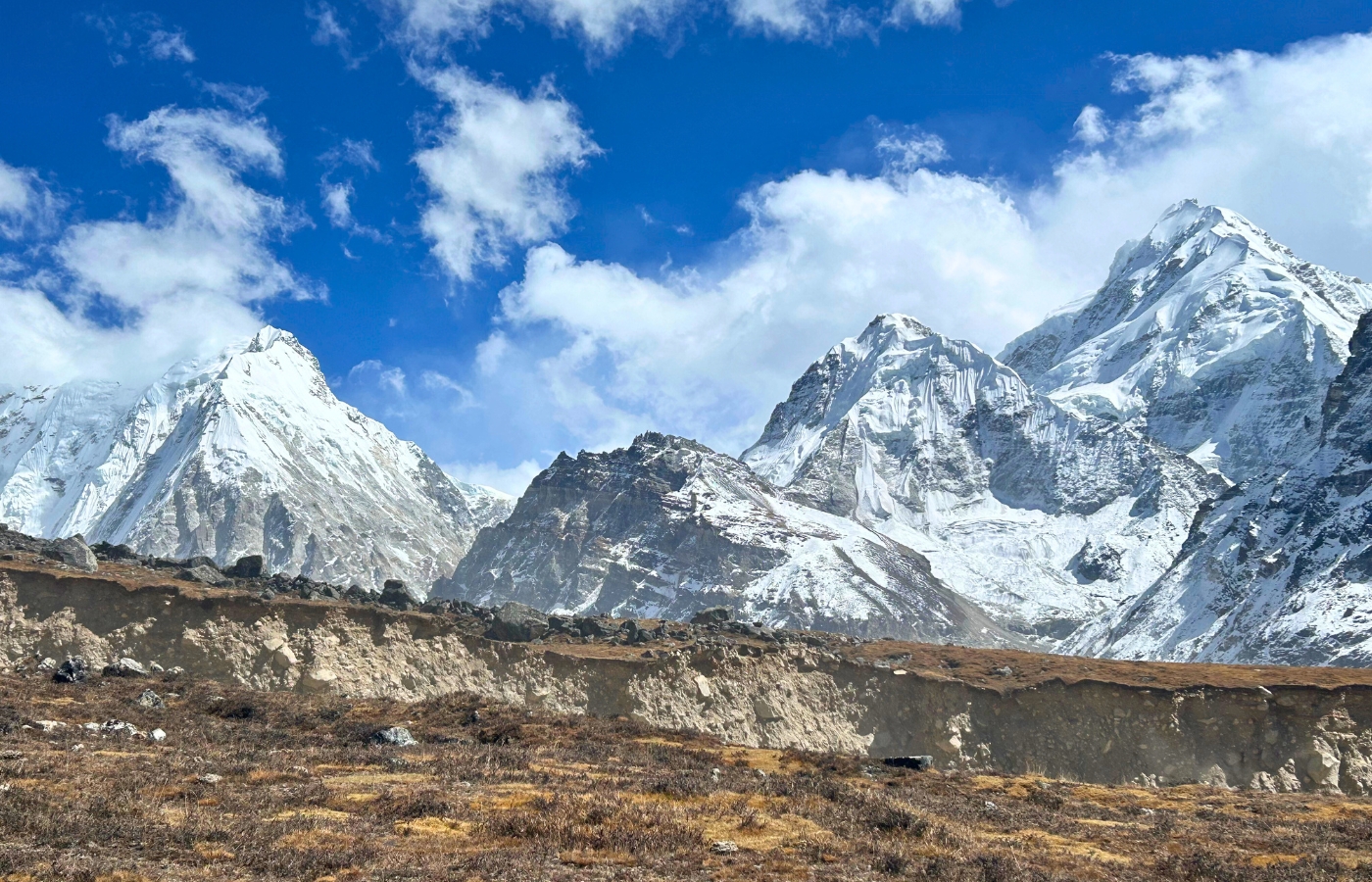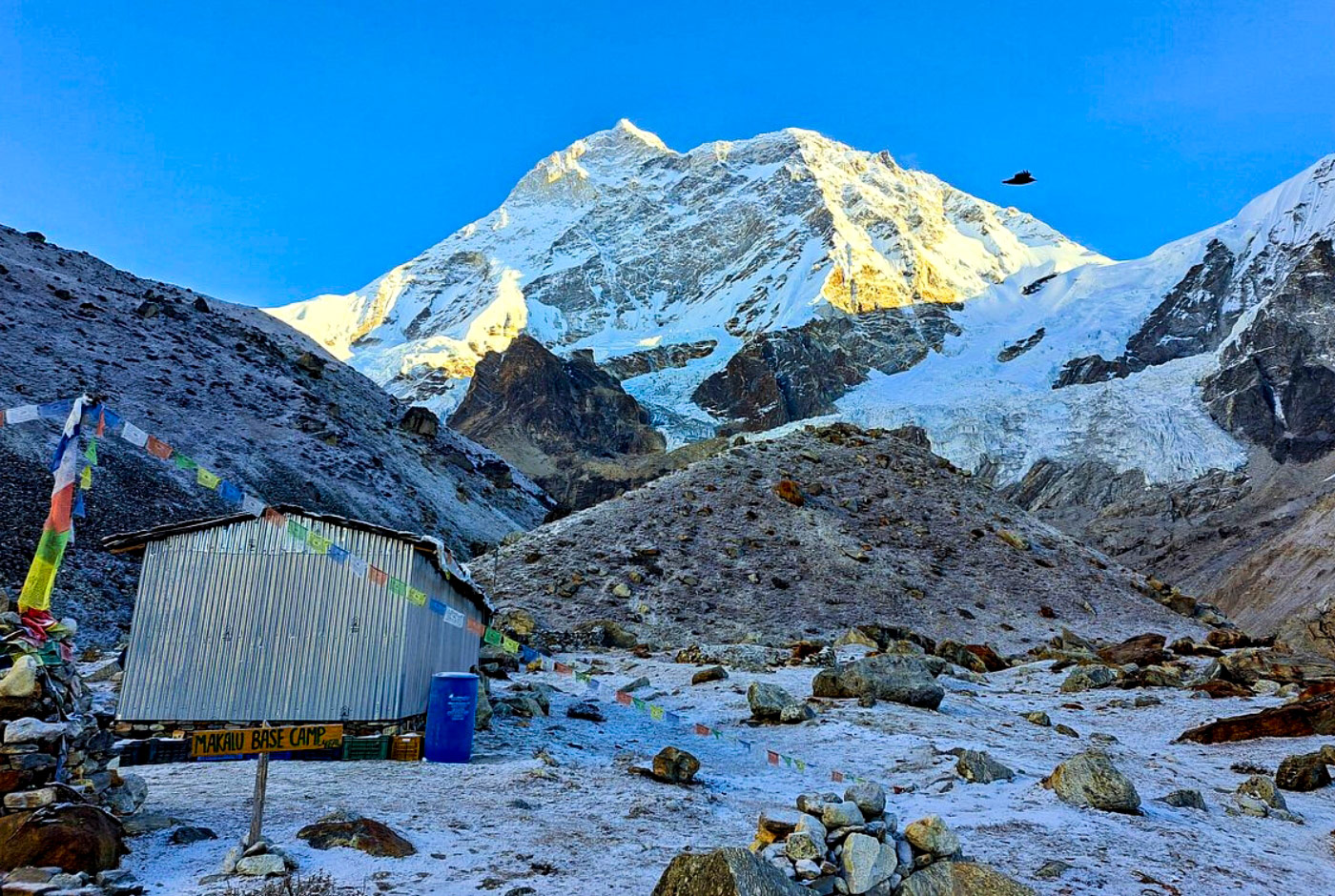Ever wondered what makes a mountain one of the Highest 5 on Earth? It’s not about size; it’s the elevation above sea level that sets Everest, K2, Kanchenjunga, Lhotse, and Makalu apart. These are not basic mountains to be climbed. These massive ranges created by tectonic collisions eons ago have stories embedded in their rugged nature. Everest's 8,848-meter crowning glory cannot be overlooked, but K2's savage slopes and Makalu's lonely pyramid have their pitch. You don’t even need to climb to get it. Trekking their base camp trails offers jaw-dropping views, rich cultures, and a chance to step lightly on these wonders.
From the Nepalese Sherpa rituals to the Pakistan-based K2’s icy gauntlet, the highest 5 promise adventure that’s as real as it gets. Which one’s calling your name?
Ranking the 5 Eight-Thousanders
Eight-thousanders are mountains with an altitude of over 8,000 meters. It is no surprise that of 14 such peaks worldwide, 8 are in Nepal, which is home to 4 of the 5 highest mountains in the world.
The highest five peaks, according to their elevations, are listed below:
| Rank | Mountain | Height (m/ft) | First Ascent | Fatality Rate | Located |
|---|---|---|---|---|---|
| 1 | Everest | 8,848.86 / 29,032 | 1953 | 0.67% | Nepal (Khumbu Mahalangur) |
| 2 | K2 | 8,611 / 28,251 | 1954 | 14-25% | Pakistan (Karakoram Range) |
| 3 | Kanchenjunga | 8,586 / 28,169 | 1955 | 4.5% | Nepal (Northern Kanchenjunga) |
| 4 | Lhotse | 8,516 / 27,940 | 1956 | 2-3% | Nepal (Everest Region) |
| 5 | Makalu | 8,485 / 27,838 | 1955 | 5.7% | Nepal (Makalu Mahalangur) |
The Highest 5 Peaks according to the Elevation
The world's five highest mountains, in descending order of elevation, are Mount Everest, K2, Kangchenjunga, Lhotse, and Makalu. Mount Everest, the highest, stands at 8,848.86 meters (29,031.7 ft). K2, the second highest, reaches 8,611 meters (28,251 ft). Kangchenjunga, the third highest, has an elevation of 8,586 meters (28,169 ft). Lhotse, the fourth highest, is 8,516 meters (27,940 ft) tall. Finally, Makalu, the fifth highest, has a height of 8,485 meters (27,838 ft).
Mount Everest: World’s Tallest Peak

Everest is the world’s highest peak and is situated at 8,848.86 m. In Nepali, it is mostly referred to as Sagarmatha.
Sagarmatha is also revered by the locals as the “Mother of the World.” The mountain is known for its 15-minute summit queues caused by overcrowding. For Sherpas, Everest is sacred, blessed through Sherpa cultural rituals like nag puja, where Rai shamans (locally called ‘Jhakris’) honor serpent deities. Yet, its slopes buzz with climbers chasing the ultimate achievement. In 2024, 1,200 commercial climbers attempted to summit Everest, with 68% reaching the summit and 8 fatalities (0.67% of the climbers). 245 solo climbers faced a 1.22% fatality rate.
| Everest 2024 Stats | Commercial Climbers | Solo Climbers |
|---|---|---|
| Summit Attempts | 1,200 | 245 |
| Fatalities | 8 (0.67%) | 3 (1.22%) |
| Success Rate | 68% | 31% |
What is the wisdom hidden behind all these risks? Bright days display stunning vistas of the Himalayan range, and they reveal a visible curvature of the Earth's surface. Trekkers of Everest Base Camp pass through ancient monasteries, immersing themselves in Nepal’s vibrant culture.
The Everest permit cost for 2025 starts at $15,000, but full expeditions can exceed $45,000. Death zone overcrowding solutions include permit caps and Sherpa-to-climber ratios. This ensures safer and more ethical climbs. To support sustainable Everest climbs, 24 tons of waste were collected in 2023 with the help of a $4,000 deposit. “Respect the puja. The mountain rewards patience,” says Kami Rita Sherpa, 31-time summiteer.
Q: “Is Everest Becoming a Trash Heap?”
Yes, but there is stiff resistance from Nepal. In 2023, climbers donated $4,000 in cash for a cleanup of 24,000 kg of litter from Everest. The reality of the waste issue is real, but progress is being made with cleanup operations.
Q: Why are bodies left on Everest?
Because of extreme conditions, recovery becomes risky and costly. More than 200 climbers have been left behind in situ, respectfully preserved by the mountain.
K2: Savage Mountain

K2, the second highest peak situated at 8,611 m, is a legend among the highest 5 mountains. It is famed for its Karakoram beauty and daring climbs.
K2, the “Savage Mountain,” towers at 8,611 m in Pakistan’s Karakoram region, distinct from the eight-thousanders in Nepal. A vertical wall of ice at 85 degrees is located 400 meters below the actual summit. This spot is called Bottleneck Traverse. It is a heart-stopping challenge that can only be tackled by the world's elite climbers. Hidden crevasses, crumbling seracs, and screaming winds; every step becomes a life-and-death struggle here. The summit success rate in 2024 was 45%.
K2 was first climbed in 1954 by Italian mountaineers Achille Compagnoni and Lino Lacedelli. “The Bottleneck demands laser focus—one wrong move, and it’s over,” says Nirmal Purja, a member of the first team to successfully summit K2 in winter. This historic achievement by the Nepali team took place in 2021. That moment sealed K2’s legendary status.
Due to the ongoing collision of tectonic plates, K2 actually grows about 3 mm every year. But what really makes it deadly are the brutal conditions—icy slopes, thin air, and temperatures dropping to –50°C.
Q: Why is K2 called Savage Mountain?
K2 is known as "Savage Mountain" due to the extreme altitude, rough terrain, and wild weather. The reputation of K2 grows ever deeper as it has a higher fatality rate than most other mountains. It is also due to the significant obstacles faced by the world's top climbers.
Q: Which is harder: K2 or Everest?
K2 is considered more demanding than Everest with its steep routes and higher mortality rates. K2's mortality rate is around 14-25%, compared to Everest’s 0.67%. And there is hardly any infrastructure in K2, which carries technical challenges.
Q: How Did K2 Get Its Name?
K2 was named during the Great Trigonometrical Survey of British India in the 19th century. Surveyors labeled peaks in the Karakoram range with "K" for Karakoram. Numbers are based on measurement order, with the calculated K2 being the second.
Kanchenjunga Himal

Kanchenjunga, at 8,586 m, is a sacred peak where climbers stop 20 m short to honor its five treasures. It falls at the 3rd highest peak among the top 15.
Climbers halt 20 meters short of Kanchenjunga’s 8,586 m summit, respecting a 1955 Sikkimese decree to preserve its sanctity. This means that climbers, if they get the chance to summit, only climb up to 8,566 m. People say it hides five treasures: salt, gold, turquoise, scriptures, and armor, which are revealed only to the devout. Its slopes, rising like a five-tiered temple, offer trekkers pristine valleys and rare orchids. It remains the only 8,000-meter peak where climbers purposely avoid the true summit. With a 22% summit success rate and 4.5% fatality rate, it’s a spiritual and physical quest.
Details of Ritual: Locals in this region offer tsampa (roasted barley), which symbolizes purity. Himalayan cultural rituals are accompanied by annual festivals in Sikkim, which pay homage to the mountain deity. Even the local monasteries do not allow celebratory dances over their image, symbolizing that reverence transcends mountaineering.
Q: What makes Kanchenjunga unique to climb?
Kanchenjunga is a technical climb, and the rule to stop at 8,566 m makes it the only 8,000-meter peak not fully summited.
Q: What kind of wildlife can you see in the Kanchenjunga region?
A: The Kanchenjunga region hosts rare species like snow leopards, red pandas, blue sheep, and the Himalayan monal within the Kanchenjunga conservation area.
Lhotse: Everest’s Quieter Sister

Standing at an elevation of 8,516 m, Lhotse shares the climb with Everest. It is the fourth-highest peak in the world.
It towers 3,200 meters above the glacier's surface. Lhotse's south face offers a much better climbing experience than the crowded routes of Everest. It had only a 17:1 climber-to-Everest ratio in 2024. With a summit success rate of approximately 60% and a fatality rate of 2-3%, Lhotse is a challenging yet rewarding climb. From the summit, Everest appears silhouetted in the dawn.
It remains the only 8,000-meter peak with a direct line to Everest’s summit via the South Col. Although less commercialized, climbers still face hazards from crevasses and steep couloirs. The Lhotse Couloir, a narrow gully near the top, is notorious for bottlenecks and brutal winds.
Lhotse grows at a rate of 5 mm/year, making it the fastest eight-thousander due to fault line pressure.
Q: Which is more difficult: Lhotse vs. Everest?
While Everest tests endurance at altitude, Lhotse demands superior technical prowess on steeper, more hazardous terrain. Both peaks are above 8,000 meters, making them very difficult to climb, as they present different challenges to climbers.
Q: How are Lhotse and Mount Everest connected?
Lhotse and Mount Everest are connected by the South Col. It is a high-altitude mountain pass at about 7,900 meters. This col is a key point on the southeast ridge route to Everest's summit and also leads to the standard climbing route for Lhotse, the world’s fourth-highest peak.
Makalu Himal
Makalu, at 8,485 m, is a remote pyramid with pristine trails. It stays at the number 5 on the list of the highest 5 peaks.
Makalu’s 2,400 m pyramid face—three Eiffel Towers high—demands self-reliance, with a 47% higher avalanche risk index than Everest. Yet, Makalu Base Camp's difficulty level rewards trekkers with untouched forests and sightings of snow leopards. The 20-day trek from Tumlingtar requires Grade 5A alpine skills.
Top 10 Highest 5: Number 5 on the list is Makalu Himal

Its steep ridges and knife-edge arêtes challenge even seasoned climbers, particularly in the vicinity of the French Couloir. It is an icy gully notorious for high winds and technical risk. Few expeditions reach the area, giving it an aura of wild purity and commercial innocence.
Gurung elders perform khadga puja, a sword ceremony, for safe passage. Considered the "Test of Endurance and Solitude," Makalu has a fatality rate of 5.7%. Spring expeditions often face sudden snowstorms and extended days of exposure, as well as the mounting effects of psychological strain.
In return, climbers and trekkers witness panoramic views stretching from Everest to Kanchenjunga without the crowd.
Q: Can beginners trek to Makalu Base Camp?
In general, the answer would be no. However, some determined beginners with a proper 5A training program and outstanding preparation might be able to make it.
Q: What does the name Makalu mean?
Makalu means "The Black God" in the local language of Tibetans. The name indicates the dark, powerful appearance of the mountain and underlines its sacredness in Tibetan culture.
Nepal’s Geological Mastery: Why 4 Giants Call It Home
Why did Nepal happen to have four of the highest 5 elevations in the world? That's the magic of the plate tectonics of the Himalayas. Approximately 50 million years ago, the Indian Plate collided with the Eurasian Plate. The impact resulted in the Himalayas rising at a rate of up to 5 mm per year. Lhotse grows at the fastest rate, increasing by 5 mm, while Everest grows steadily at ~2 mm. This tectonic plate collision in Nepal shapes adventure, with trails winding through Sherpa villages and alpine meadows. Since 2009, our Nepal Hiking Team has explored these paths, watching peaks rise gradually.
Q: Why does Nepal have so many high mountains?
Nepal sits at the collision zone of the Indian and Eurasian tectonic plates. This ongoing geological uplift created the Himalayas, forming towering peaks like Everest, Lhotse, and many others.
Tallest vs.Highest
What’s the highest mountain in the world? Many assume “tallest” and “highest” are the same, but there’s a catch. Mauna Kea in Hawaii stretches over 10,000 meters from its ocean floor base, yet Everest reigns at 8,848.86 meters above sea level. But this distinction fuels the Everest vs. Mauna Kea controversy. In mountaineering, “highest” means elevation above sea level, crowning the Mount Everest.
| Mountain | From Sea-Level Height | From Base-to-Summit Height |
|---|---|---|
| Everest | 8,848.86 m | 8,848 m |
| Mauna Kea | 4,207 m | 10,210 m |
Witnessing the Highest 5 from Base Camp
Trekking among the highest 5 delivers stunning views and cultural immersion without summiting, making it ideal for ethical adventurers seeking to conquer the world's highest five mountains.
There is no need to summit to the top to feel the Himalayas’ pulse. Epic trekking along these mountains, including Everest, Kanchenjunga, Lhotse, and Makalu, takes place against a fabulous landscape, rich geology, and Sherpa cultural rituals. While K2 shines in Pakistan’s Karakoram. Since 2009, we’ve guided trekkers through these trekking trails in Nepal, ensuring ethical trekking certification. The following Base Camp treks offer the best views of the top 5 peaks:
- Everest Base Camp: The Everest Base Camp difficulty is moderate, perfect for fit beginners. This 16-day trail offers stunning views of Everest and Lhotse.
- Kanchenjunga Base Camp: A 22-day trek requires a permit from the Kanchenjunga Conservation Area Project, in addition to a Restricted Area Permit. Sacred valleys and tsampa offerings honor the treasures of the 8,586 m peak.
- Makalu Base Camp: This Makalu Base Camp trek (20 days) reaches 5700 m, offering the best Makalu viewpoint without requiring the mountain climb. You can spot snow leopards; the Gurung Khadga Puja blesses the way.
- K2 Base Camp: The trek to K2 Base Camp requires a Concordia trek in Pakistan, a 14–20-day quest for Karakoram glory.
Survival Secrets: The Unspoken High-Altitude Truths
Only a very small quantity of oxygen is available in the death zone above an altitude of 8,000 meters. This means oxygen is approximately 30% less than sea-level oxygen. This presents a significant test of endurance and resourcefulness for climbers, both physically and psychologically.
Eight-thousander preparation involves understanding the physiology of the death zone. Acclimatization boosts success by 40% over oxygen therapy alone, reducing various health issues. These can be altitude sickness-related medical risks, such as hypoxia, brain swelling, and other risks. Sometimes Sherpas stress pacing on descents, where 68% of deaths occur.
| Method | Success Rate | Risk Reduction |
| Acclimatization | 70% | 40% |
| Oxygen Only | 50% | 20% |
To mitigate the risk of altitude sickness, it is crucial to ascend gradually. It's essential to stay well-hydrated while hiking.
Ethical trekking on the mountains
Ethical Trekking in the mountains attracts participants from diverse cultural and religious backgrounds. The ethical practice of trekking in mountainous areas helps preserve the Himalayas. It is also sustainable in terms of environmental degradation, as it minimizes impacts on the highest peaks.
Trekking the Highest 5 mountains in the world is more than an adventure. It’s a pact with nature and culture. On Everest, over 200 climbers rest in the mountain’s embrace, preserved by extreme conditions. So sustainable Everest climbs should not be neglected. Recovery is a risk, but our focus is on sustainability: portable toilets and waste management at base camps help reduce the environmental impact in the Himalayas. In 2023, Nepal cleared 24 tons of Everest waste via a $4,000 deposit. K2 body recovery faces similar challenges in Pakistan’s remote Karakoram. We honor Sherpa cultural rituals by supporting fair wages and preserving traditions, like puja ceremonies. Several of these rituals must be done on a trek to any of the eight-thousanders.
Conclusion
The highest 5, such as Everest, K2, Kangchenjunga, Lhotse, and Makalu, are more than great heights. Each mountain brings its own unique blend of brute challenge, cultural richness, and jaw-dropping beauty. The iconic summits of Everest and K2, with their savage slopes located in the Karakoram range, are the first two highlights among the top 5 peaks. Then comes the sacred restraint of Kangchenjunga. Lhotse Himal presents more technical challenges compared to Everest. The pristine wilderness offered by Makalu will delight you. Among these five highest peaks, various aspirations shine in the hearts of mountaineers.
The ethical exploration is essential, whether it involves climbers in the Bottleneck of K2 or trekkers on Kanchenjunga's sacred summit. Respecting Sherpa rituals and maintaining minimal human impact on the environment should be considered for any of the eight-thousanders. Choose a mountain that best suits your skill level and spirit. But climbing mountains is not recommended for most people. Safer alternatives to base camp treks offer stunning views of the highest peaks and cultural immersion without the risks associated with summiting. Select a trek matching your fitness and passion, respect local customs, and tread lightly. Which base camp will you conquer?



Post a Comment